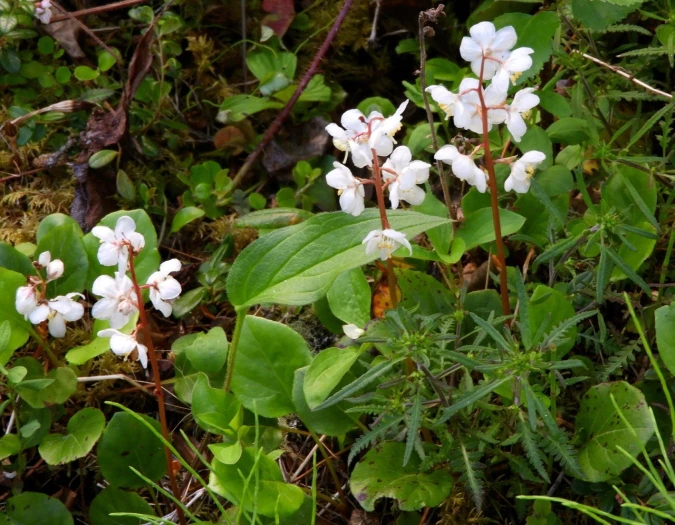Arctic Wintergreen
(Pyrola grandiflora)
Arctic Wintergreen (Pyrola grandiflora)
/
/

© Akr
CC BY 4.0
Image By:
© Akr
Recorded By:
Copyright:
CC BY 4.0
Copyright Notice:
Photo by: © Akr | License Type: CC BY 4.0 | License URL: http://creativecommons.org/licenses/by/4.0/ | Uploader: akr | Publisher: iNaturalist |
























Estimated Native Range
Climate Requirements for St. Joseph, Missouri
| This Plant | Your Site | Plant Suitability for Your Location | ||
|---|---|---|---|---|
| • Precipitation | 4" - 89" | 36" | Aquatic | Aquatic |
| • High Temp. | 9°F - 75°F | 89°F | Your summers may be too hot for this plant. | Too hot |
| • Low Temp. | -54°F - 31°F | 17°F | Your winter temperatures are normal for this plant | Excellent |
This plant may not grow well at your location - your precipitation is too high.
Summary
Pyrola grandiflora, commonly known as Arctic wintergreen or largeflowered wintergreen, is a hardy perennial evergreen subshrub. It is native to a variety of habitats in the Northern Hemisphere, including the cool temperate and arctic regions of Greenland, Canada, the United States (particularly Alaska), and across Eurasia. This species is typically found in alpine tundra, heathlands, and coniferous forests, often in both moist and dry understory conditions. Pyrola grandiflora has a compact growth habit, reaching heights of 1-10 inches, and features basal, leathery leaves that form a low rosette. The plant is notable for its large, racemose inflorescences with pinkish sepals and greenish-white petals that bloom from April to June. The flowers are subtly showy and attract pollinators such as bees and butterflies.
Arctic wintergreen is valued for its ornamental foliage and delicate flowers, which add interest to shade gardens and woodland settings. It is used in cultivation for ground cover, border planting, and naturalized areas. Gardeners appreciate its low maintenance and ability to thrive in cool, shaded environments with moist, well-drained, acidic soils. While it prefers partial to full shade, it can tolerate some sun in cooler climates. There are no major disease issues, but the plant can be sensitive to overly wet or dry conditions.CC BY-SA 4.0
Arctic wintergreen is valued for its ornamental foliage and delicate flowers, which add interest to shade gardens and woodland settings. It is used in cultivation for ground cover, border planting, and naturalized areas. Gardeners appreciate its low maintenance and ability to thrive in cool, shaded environments with moist, well-drained, acidic soils. While it prefers partial to full shade, it can tolerate some sun in cooler climates. There are no major disease issues, but the plant can be sensitive to overly wet or dry conditions.CC BY-SA 4.0
Plant Description
- Plant Type: Shrub
- Height: 0.5-1 feet
- Width: 0.5-1 feet
- Growth Rate: Slow
- Flower Color: Pink, White
- Flowering Season: Spring, Summer
- Leaf Retention: Evergreen
Growth Requirements
- Sun: Part Shade, Full Shade
- Water: Medium
- Drainage: Medium
Common Uses
Bee Garden, Butterfly Garden, Low Maintenance, Showy Flowers, Water Garden
Natural Habitat
Native to alpine tundra, heathlands, and coniferous forests, often in both moist and dry understory conditions
Other Names
Common Names: Largeflower Wintergreen, Round-leaved Wintergreen, Arctic Pyrola, Large-Flowered Pyrola, Large-leaved Wintergreen
Scientific Names: Pyrola grandiflora, Pyrola borealis, Pyrola canadensis, Pyrola chlorantha var. occidentalis, Pyrola gormanii, Pyrola grandiflora var. canadensis, Pyrola grandiflora var. goramnii, Pyrola grandiflora var. gormanii, Pyrola grandiflora var. gormanii
GBIF Accepted Name: Pyrola grandiflora